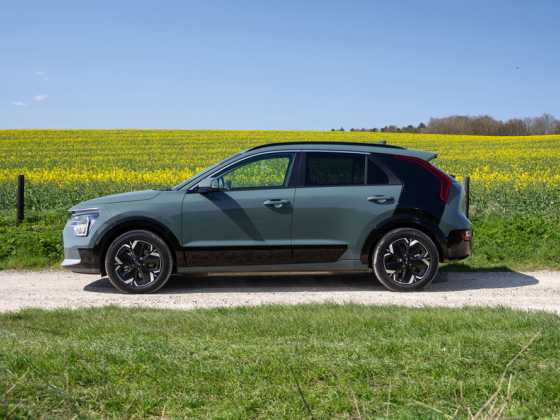Life in a Leaf
With an exterior that doesn’t scream “I’m electric”, plenty of space inside and long term cost benefits, the electric Nissan LEAF’s got a lot to give the fleet market, finds Roland Rendell
 I was looking forward to finally getting behind the wheel of GreenFleet’s 2011 Electric Vehicle of the Year, the Nissan LEAF, as until this point I’d only ever been a passenger.
I was looking forward to finally getting behind the wheel of GreenFleet’s 2011 Electric Vehicle of the Year, the Nissan LEAF, as until this point I’d only ever been a passenger.
Push the Start button and you are greeted by a nice little jingle, rather than the purr of a conventional internal combustion engine. As with all EVs, it’s silent, and I have heard that when designing this car, the boffins in Japan realised that the windscreen wiper motor made more noise than the one powering the car!
There’s an easy, seamless progression from standstill to full speed. If you floor it, as I tend to do with any EV, purely out of curiosity, you get pulled back in to your seat as the acceleration is phenomenal. In fact, Nissan equates the torque of the LEAF’s motor to that of a 2.5-litre V6 petrol engine. Oh yeah!
There is a ‘distance to depleted’ meter, which estimates how far you will be able to travel based on current driving style – drive hard and you’ll notice a very swift drop in range.
In its more natural environment around town and on A-roads, the LEAF can easily keep up with the flow and proves more than capable in terms of performance. The steering is very light, but the car is still responsive and agile around corners. The placement of the battery gives a relatively low centre of gravity and the 50:50 weight distribution between the front and rear, gives the LEAF an ideal handling balance and road hold.
After buzzing about with plenty of stops and starts, it’s time see how the most crucial part of owning an EV unfolds – the recharging. The LEAF’s 24kWh battery is supposed to be able to carry the car a potential 110 miles. While that is undoubtedly achievable, I did not manage it, but that’s probably because of the way I’ve driven it. I have said it before, an EV requires a totally different kind of driving style. You almost need to completely re-educate yourself, in fact. But once you do, you will find it is well worth it.
Charging the LEAF at home will take 11-12 hours using a UK standard wall socket. A home charging unit will reduce that to 7-8 hours, and a rapid charger can achieve an 80 per cent charge in less than 45 minutes. I leave it overnight for a total recharge. My drive to work can be done in minutes, so were I to do nothing other than commute, I wouldn’t need to charge it again for six weeks!
At £25,990 after the £5,000 government subsidy, the price may put buyers off. But this is when the long term savings need to be looked at. Charging the LEAF should cost you just £2 in electricity, and if you only get 80 miles on a charge then your average monthly charging costs will be £25. Compare that to an average petrol bill of £165 and the road tax exemption and the savings really do start to add up. Think carefully about how you’re going to use the LEAF, before you buy, but if the usage stacks up, I would certainly go for it.









